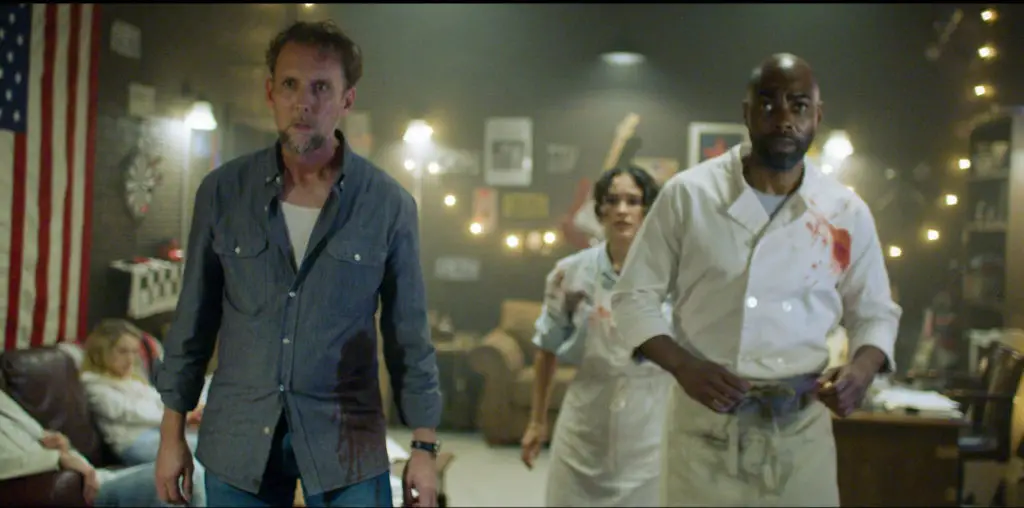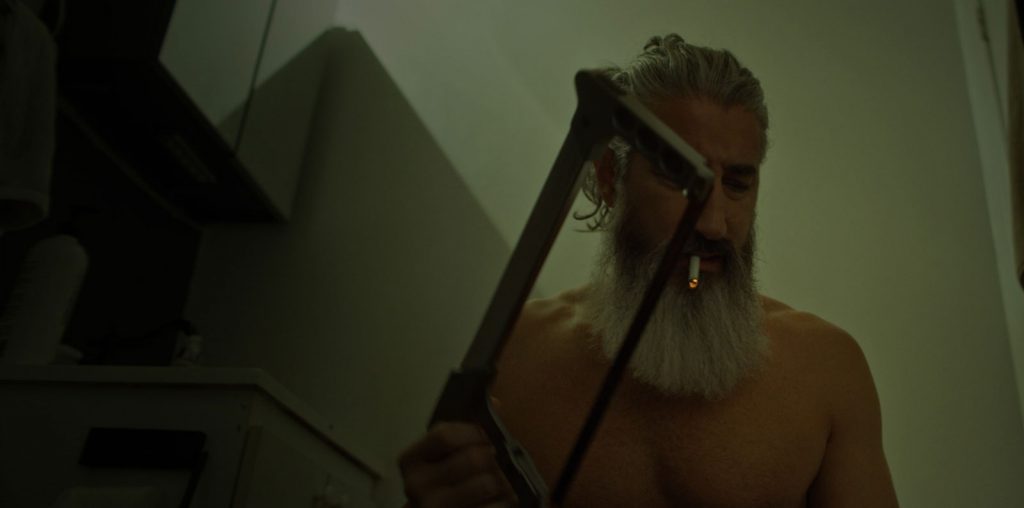
“Touching Wild Horses” seems more a trite Movie-of-the-Week, than a solid film that combines breathtaking beauty with character conflict and resolution.
The twin metaphors of loss and isolation act as the glue but the story-telling is too on-the-nose to be effective. Prior to the screening at the Palm Springs International Film Festival’s Canada Night reception, Jane Seymour (who was the actor of class, gamely trying to salvage the island’s washed-up articfacts and her lines) cautioned us not to be too hard on her portrayal of Fiona, “She’s mean in the beginning, but comes around soon.”
Alone on Sable Island, Fiona’s world turns upside down when she takes on the care and education of her nephew, Mark (Mark Rendall in an over-anxious performance that gets mired in 15 second emotional outbursts, run-away from the conflict, and instant-hug forgiveness) due to a tediously told flashback car crash that kills his drunken dad, angelic sister, and puts his mother into a script-driven coma. (Her timely recovery—with just a slight mobility deficit—is just one of many examples of the writing’s desertion of reality: Ask anyone associated with acquired brain injury!)
Set in 1984, the humour stretches our patience as well: Mark’s answer to the definition of homo sapiens as “gay people,” is a cheap laugh and not probable from an 11-year-old boy as was his equally lame confusion of metaphor with semaphore. At least we were spared the wet dream sequence.
The plot tries to get going (transparently set up by the circled calendar birth date of Fiona’s scandalous past: child-out-of-wedlock in a Catholic setting, so off for adoption) with the desire of the stereotypical Canadian bureaucrat (Charles Martin Smith, understandably unsure whether to push the gruff, greed or compassion elements of his loosely quilted character) to rid the island of Fiona and “the boy.”
Well the syrup gets a lot thicker when John (the foal, named after – you guessed it – the long-lost son) loses his mother—drowned after getting tangled in the nets of illegal fishermen washed ashore in a storm) becomes Mark’s live-in house pet (really, even sharing his bed in a reverse Godfather scene) only to be discovered by the nasty government man (who was believing that the sound of hooves hitting the inner cabin walls was just “a boy that needs a strong male presence” but then became suspicious at John’s whinnies—no wonder we always get our man!), sealing their expulsion.
But director Eleanor Lindo and screenwriter Murray McRae seem intent on pulling all of the emotional stops with an ending that I won’t give away but they certainly should have.
What pleasures there are come from Steve Danyluk’s knowing lens and Barrington Pheloung’s beautiful score that at least provide a visual and musical feast as we revel in splendour of the animals.
Viewed as an adjective rather than a verb, the movie’s title rings true.

